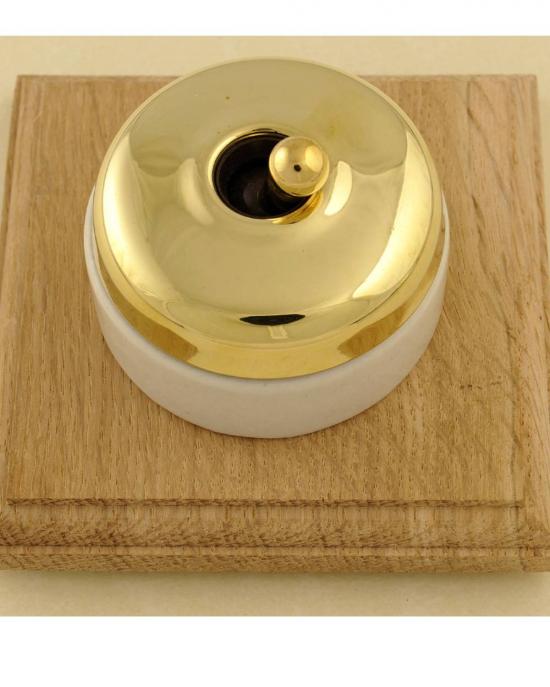
This pateras is designed to allow the direct replacement of modern plastic flush mounted light switches with period dolly switches. This is the easiest (and is an authentic) way of carrying out this job as it just replaces the modern switch. It is made in oak so that it can be simply waxed or painted if desired. Please note that this price is for the oak pateras. The switches are included for illustrative purposes only.
We are often asked why we fit pateras when installing dolly switches. In essence, we do this for 3 good reasons. Firstly, this is how it was invariably done and we do not like to deviate from what was normal practice. This is authentic and always 'looks right'. Pateras were fitted in the early years for two reasons. The practical reason is that walls were often damp and the wooden pateras shielded the fragile cables and switches from damage that might be caused by the damp walls. Aesthetically, this approach of providing a visual transition from a flat surface to a decorative element has been used for years. You will find similar devices in the corners of Georgian doors or under corbals and mouldings.  But finally, the most important for modern householders, it makes the job of fitting dolly switches in place of the modern flat white plastic switches very much easier and satisfactory. Underneath the modern switch is usually a small box sunk into the plaster. The pateras will cover this without the need for filling or making good afterwards.
But finally, the most important for modern householders, it makes the job of fitting dolly switches in place of the modern flat white plastic switches very much easier and satisfactory. Underneath the modern switch is usually a small box sunk into the plaster. The pateras will cover this without the need for filling or making good afterwards.
A Patera (plural pateras or paterae) is, in architecture, a shallow decorative element, typically found on walls or at the junction of straight decorative elements such as ceiling coffers or door casings.
So, most of us will remember that old dolly switch installations invariably included a wooden pateras between the switch and the mounting surface. Undoubtably, in modern times, this arrangement looks right. But it is not easy to unravel the reasons why this convention was carried out. It seems that the pateras (or mounting block) was commonly used to mount gas lights to walls and ceilings. Its purpose was three-fold.
Firstly, as indicated in the first paragraph, it provided a decorative transition between the wall and the lamp. Secondly it both enabled and hid the junction between the gas pipe and the lamp itself. Thirdly, it made fitting these devices to uneven walls much easier.
For these reasons the practice was carried over to the electrical era and switches and lamps were again mounted onto pateras. But, there was another important function when used with electrical fittings. Walls were often damp and the wooden pateras would keep the electrical connections clear of damp, rotting plaster.